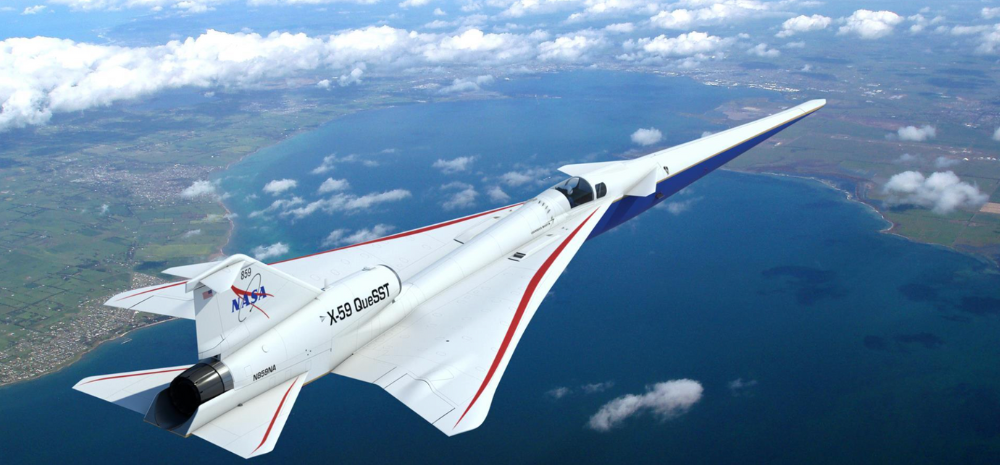There has been a ground-breaking stride in the commercial supersonic flight space since NASA unveiled its revolutionary Quiet Supersonic Technology experimental test aircraft (QueSST) on January 12 at Lockheed Martin Skunk Works.

NASA’s Supersonic X-59
The completion of the X-59’s construction signals the initiation of the countdown toward its inaugural flight. The cutting-edge features of the X-59 were shown in partnership with the Lockheed Martin Skunk Works in Palmdale, California.
The scientific wonder engineered to attain the speed which is 1.4 times the speed of sound which is an impressive 925mph (1,488 km/h).
This is a giant leap by NASA when it comes to making the supersonic travel as a feasible option.
The distinctive design of the aircraft includes a thin, tapered nose that constitutes almost one-third of the aircraft’s total length. The intention of the design lies in the dispersion of the shock waves and also the mitigation of disruptive sonic booms associated with supersonic planes.
Speaking about the historic feat, the Deputy Administrator of NASA Pam Melroy said that “This is a major accomplishment made possible only through the hard work and ingenuity from NASA and the entire X-59 team.”
While talking about the once ambitious concept and now a tangible reality, she asserted that the NASA’s X-59 shall revolutionize the way people travel and bring them closer together in significantly less time.
There is an external vision system with high-resolution cameras feeding into an ultra-high-resolution monitor due to the limited visibility in the cockpit.
Offering engineering advantages, this aircraft can potentially influence future aircraft designs by eliminating forward-facing windows.
The top-mounted engine with the smooth underside also further the minimization of the impact of sonic booms.
NASA to Test Flights & Seek Approval to Lift Ban on Supersonic Flight over Land
In the third phase, NASA plans to conduct flights over undisclosed locations in the United States for the X-59. This test phase which shall most probably between the year 2025 and 2026 shall gather feedback from communities overflown, providing crucial insights into the public’s response to the aircraft’s noise characteristics. Due to concerns like explosive sonic booms, the nation had prohibited commercial supersonic travel over land.
NASA’s associate administrator for aeronautics research, Bob Pearce emphasize the design of aircraft to potentially produce soft thumps instead of a sonic boom.
The main role of the aircraft is to collect the data of this sonic thump and public’s acceptance of the same so that it can later be submitted to US as well as international regulatory authorities which will eventually work towards the lifting in ban for supersonic flight over land.













